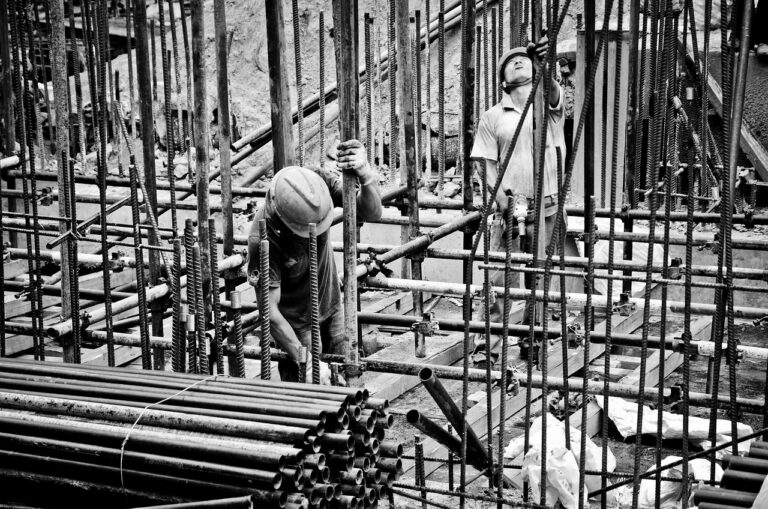Luxury construction, or high-end residential construction, presents unique challenges to developers, general contractors, that their schedules and estimates routinely overlook. Some of these lapses translate into grim realities that are later obfuscated by glossy portfolios and website images, many of which are renderings made before a project was shovel-ready: “Who stops to ponder that behind the success stories of these posh luxury residential projects are efforts plagued with change orders, vastly over budget, and regularly exceeding the turnover date by 20%, just like any other project?”
Before discussing the scheduler’s role on luxury construction projects, it’s important to understand there are thresholds for quality and tolerances that exceed the caliber of all but those developers and general contractors who specialize in the market – to wit there are precious few. These criteria demand a higher order of project delivery, albeit this is not always reflected in schedule integrity. A CPM luxury construction schedule will be only as plausible as the acumen of the builder he works for.
Garden variety CPM schedulers typically lack the insight and experience that informs well planned and orchestrated luxury construction project logic. It doesn’t help that most lack high-end hands-on experience, and are over-reliant on third-party input to calculate duration and activity relationships. This is especially true with labor intensive work
Luxury construction CPM scheduling project logic must observe several basic concepts and represent them in a coherent and plausible timeline that is germane to each project. Some of these are:
- Submittal, review, approval, sampling, and mock-ups are more rigorous and prolonged for luxury construction – especially customizations
- MEP rough and layout coordination are held to higher layout tolerances that require extra time to ensure. Contractors are embarrassed to point this out, despite the inevitability of it
- Even seemingly mundane finishes – such as Gypsum wall board, have exacerbated duration: the labor differential from a wavy Level 3 compound finish to a Level 5 finish nearly flat as glass can be considerable, as much as triple. Note in the image below, the entire wall board is floated or ‘feathered’ with the compound or plaster to achieve Level 5

- Much customized luxury residential construction uses negotiated bid contracts, where a contractor of choice negotiates scope of work, budget, and schedule with the owner, who has retained a designer of choice. The designer often sponsors or recommends a contractor. The negotiated bid allows the ultimate freedom of the owner to take more time to make decisions or make impetuous ones, or change his mind continuously. Negotiated bids of this sort can be most irksome to a scheduler trying to maintain coherent project logic
- Fabrication and duration windows for Divisions 8 and 9 (Openings, Finishes) can be as much as thrice traditional construction
- Time must be allotted for constant housekeeping and protection of work-in-place – including separation of trades: trade congestion leads to mistakes and accidental damage of cost-prohibitive work-in place
- Delicate and fine finishes are sensitive and should only be delivered to a dry and climatized workspace
- ‘Punch-out list’ is a euphemism for something more Kafkaesque. Designers and owners have a penchant or imperative for the list that it is evergreen – never ending, or that it must take five-times longer than planned. Instead of five-days, allow twenty-five
- Contingencies for design delays must be expected, however, few owners will permit them in the schedule. These include design errors and omission reconcilement, extended approval times, and lag for RFI processing. In lieu of contingencies, delay costs are typically captured by the builder in change orders. A proper schedule contingency is about 10-15% of total duration – 20-30% for custom luxury construction
For the past thirty-years, the trend has been for developers to slap on a ‘starchitect’s’ over-ambitious and idealistic interior design to a project in order to compete in the luxury market: too often this constitutes a check they write that can’t be cashed. Under-endowed with a sky-high interest construction loan, they solicit bids ‘on the street,’ or to any contractor willing to compete with a low tender, and ridiculously efficient schedule.
Before then, luxury construction was a popular choice for townhouse and brownstone dwellers with the capital to create customized dwellings, painstakingly detailed and crafted to the highest standards. Design fees for many of these palaces were off the charts. However, these were mostly customized upgrades and retrofits, whereas today’s luxury construction is mostly new condominiums with repetitive layouts.
I have seen far too many ‘luxury’ condominiums fall victim to class-action lawsuits over product quality and lapsed turnover dates. There are several reasons why this is epidemic, yet none of them seem to deter banks from writing construction loans to finance such ill-fated ventures.
The biggest challenges in luxury construction lie with developers’ intentions or ambitions to build on overly aggressive timelines and budgets. Inexperienced developers are rather feckless in both capacities: they are a disposable commodity. It is only the more sophisticated developers who understand the nuances of luxury construction that hit the mark. It is the rare developer who comprehends the full scope of luxury construction: from excavation through fit-out. These savvy developers know which contractors can deliver, and which are merely pretenders.
“It’s rarely a good sign to hear the whirring of a coring machine or ping of an impact hammer emanating from a new structure – a tell-tale death knell for the project
Wise developers choose general contractors very carefully if they are to be successful in their ventures. They are reliant on the builder’s prowess to perform at the highest level, therefore, a proven track record must be validated before the contract is inked. The less scrupulous developers merely cater to wherever the most influence or motivation lies – some unabashedly so, shaking down new contractors, and collecting tribute from those they sponsor regularly.
One of the earliest and most impactful oversights in luxury construction is the failure to maintain strict tolerances of structure, superstructure and infrastructure, or reinforced concrete and steel placement, curtain wall and exterior framing, and rough and finish MEP and architectural fitout. A lapse in tolerance in structure will cascade into affecting the succeeding superstructure and infrastructure in a way that is only serviceable with concrete coring and jackhammers, if at all – ‘tear-out work.’ The sound of these machines from a building going up is a sure sign that such corrective work is already under way: demolition tools should not be needed for a new building, and penetrations are made before steel and reinforced concrete are placed.
To be certain, there are built structures perfectly plumb and level that should have facilitated high quality level of finished product installation, only to be sullied by an incompetent fit-out contractor lacking the wherewithal and skilled resources to take advantage of such good works. Frequently, it is luxury construction rough work – piping, wiring, duct, that (literally) doesn’t meet its mark or position on the blueprints. Finally, even when quality structure and rough-trade installations all correct, contractors’ finish fabricators and installers may not cut the mustard.
I daresay part of the problem is the scarcity of skilled craftspeople in the trades. The average tradesperson is in their mid 40’s, and likely their skill was passed down from their parent(s), or they learned when the Unions used to invest in training. That was the 20th century. This tradition has all but vanished in the 21st century. Trade unions provide far less training opportunities than they once did, and curricula seldom reach the high-skilled finished tolerance level of stone, glass, wood, and ornamental metal: just the basics. The same can be said of CPM schedulers and cost estimators.
Much of the diminution of skilled trades is owing to advances in manufacturing, such as CNC routers, laser and water-jet machining, and generic or non-customizable designs that replace manual labor. Factory production is far more efficient and labor is more economical than in the field.
However, only a seasoned luxury construction scheduler observes that although manufactured specialty finishes are quicker out of the gate, first delivery can be as much as sixteen to twenty-four weeks from release of fabrication or dimensioned drawings. The drying up of small to medium local shops that featured shorter leads has led to an over-reliance of factory produced goods. The jig (literally) is up when even the smallest replacement component needs to be fabricated in the factory – another twenty-four weeks in the schedule.
Delayed timelines put added pressure on the scheduler. Too often, the true critical-path he establishes is manipulated by his betters, taking away both control and accountability. Naturally, this is done as a means of distracting certain parties from realities the contractor believes will disappear of their own impetus. If they don’t, there is always the scheduler to blame.










